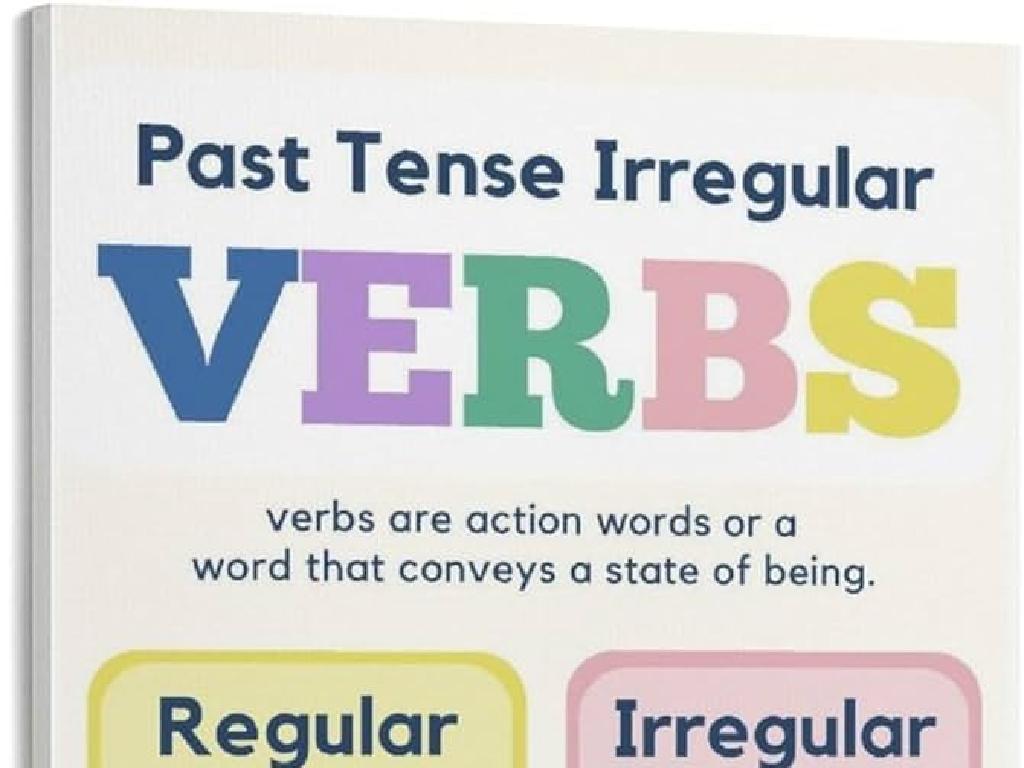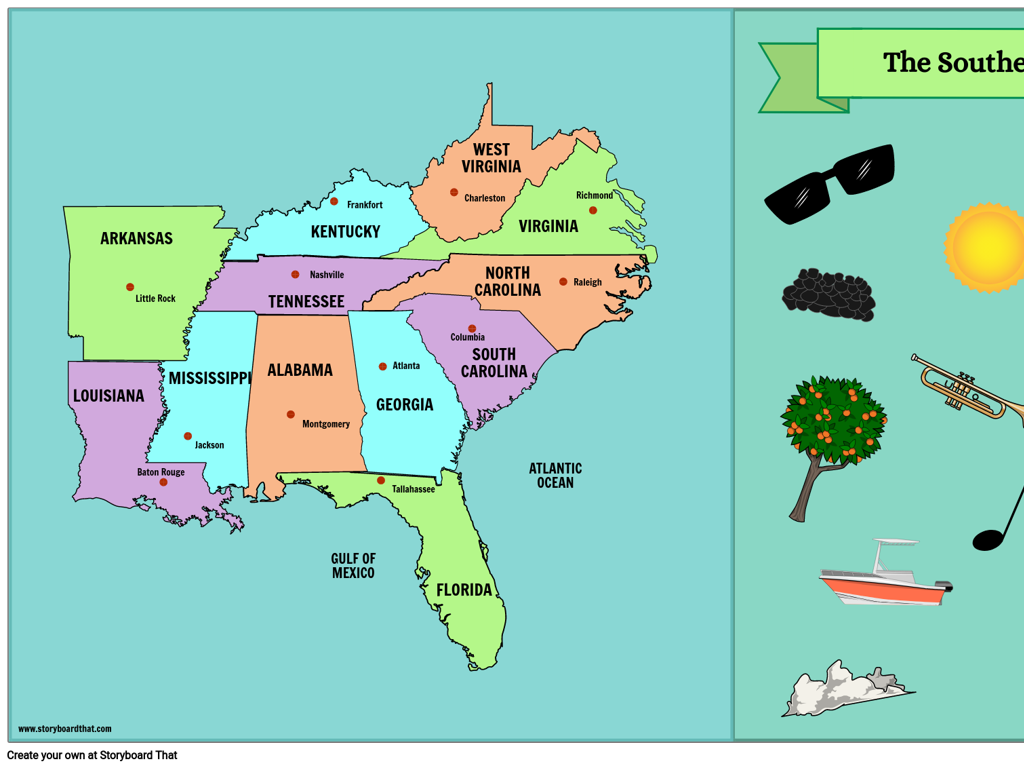Read Animal Fantasy
Subject: Language arts
Grade: Second grade
Topic: Read-Alone Literary Texts
Please LOG IN to download the presentation. Access is available to registered users only.
View More Content
Welcome to Animal Fantasy!
– What is Animal Fantasy?
– Stories where animals talk & act like people
– Discover popular books
– ‘Charlotte’s Web’, ‘The Tale of Despereaux’
– Why these stories are fun
– They spark our imagination & teach lessons
– Imagining animals like us
– Think about what your pet would say if it could talk!
|
This slide introduces the concept of Animal Fantasy to second graders, a genre where animals are given human traits, like speaking and making decisions. Highlight well-known books such as ‘Charlotte’s Web’ and ‘The Tale of Despereaux’ to give students relatable examples. Discuss why these stories are enjoyable, focusing on their ability to stretch our imagination and the moral lessons they often impart. Encourage students to think creatively about animals in their own lives and how they might behave in a fantasy world. This will help them connect with the stories and enhance their understanding of the genre.
Exploring Animal Fantasy
– Animals with human traits
– Animals walk, talk, and make decisions.
– Communication like humans
– They can speak and understand language.
– Emotional animals in stories
– They show happiness, sadness, and more.
– Magical worlds in animal fantasy
– A place where amazing things can happen.
|
This slide introduces students to the genre of animal fantasy, where animals are given human characteristics. They not only talk and communicate like humans but also possess the ability to think and feel a wide range of emotions. These stories often take place in magical or fantastical settings that captivate the imagination of young readers. Encourage students to think of examples from books they’ve read or movies they’ve seen. Discuss how these elements make the stories interesting and what we can learn about our own world from these fantasy worlds. Have students share their favorite animal fantasy story and discuss the human traits exhibited by the animals in those stories.
Exploring ‘Charlotte’s Web’
– Meet Wilbur the pig
– Charlotte the spider, his friend
– Zuckerman’s farm setting
– A lively place where the story unfolds
– Overview of the story’s plot
– Wilbur’s adventures and friendship with Charlotte
|
This slide introduces students to the classic animal fantasy ‘Charlotte’s Web’. Begin by discussing the main characters, Wilbur, a lovable pig, and his wise friend Charlotte, a caring spider. Describe the setting, Zuckerman’s farm, as a backdrop where the story takes place, and give a brief synopsis of the plot, focusing on themes of friendship, life, and death. Encourage students to think about how the characters interact with each other and how the setting influences the story. The aim is to pique students’ interest in reading the book and to prepare them for exploring the themes and messages within the story.
Reading Time: Exploring ‘Charlotte’s Web’
– Listen to ‘Charlotte’s Web’ chapter
– Visualize the farm setting
– Picture the barn, the animals, and what they’re doing
– Imagine the animal characters
– Think about Wilbur, Charlotte, and their friends
– Identify fantasy elements
– What parts of the story could not happen in real life?
|
Today’s reading activity involves listening to a chapter from ‘Charlotte’s Web’ by E.B. White, a classic example of animal fantasy. Encourage the students to close their eyes and imagine the farm where the story takes place, picturing the barn, the fields, and the animals as they are described. Ask them to focus on the characters of Wilbur the pig and Charlotte the spider, considering their personalities and actions. Discuss the elements of fantasy in the story, such as talking animals and their complex relationships, which differentiate it from reality. This will help students understand the genre of animal fantasy and its characteristics. After reading, facilitate a discussion about the fantasy elements and how they contribute to the story’s enjoyment and message.
Discussing ‘Charlotte’s Web’: Elements of Animal Fantasy
– Wilbur’s unique character traits
– Wilbur is not just a pig; he’s brave and caring!
– Charlotte’s display of friendship
– Charlotte writes words in her web to save her friend.
– Identifying Animal Fantasy elements
– Talking animals and their human-like friendships.
– Reflect on the story’s messages
|
This slide aims to engage second-grade students in a discussion about the classic animal fantasy story ‘Charlotte’s Web’. Start by exploring Wilbur’s character and what makes him special, such as his bravery and caring nature. Discuss how Charlotte demonstrates her friendship, particularly through her selfless acts. Guide students to identify elements of animal fantasy within the story, like talking animals and their complex relationships. Encourage students to think about the underlying messages of the story, such as the value of friendship and the importance of compassion. This will help them understand the genre and enhance their appreciation of the narrative.
Create Your Own Animal Fantasy
– Pick an animal for your tale
– Name your animal and give it human traits
– For example, a talking rabbit named Mr. Whiskers who loves to paint
– Imagine a magical setting for the adventure
– Like a shimmering forest with candy trees
– Get ready to tell your story in class
|
This slide is meant to inspire creativity in students as they craft their own animal fantasy stories. Encourage them to think outside the box when choosing their animal protagonist and to give it a unique name and human-like qualities, such as the ability to speak or perform human activities. Prompt them to envision a magical world where their story will take place, which can be as whimsical and imaginative as they like. The goal is to let their creativity flow and to prepare to share their stories with the class, fostering a fun and engaging environment for practicing narrative skills and exploring the fantasy genre.
Share Your Animal Fantasy Story
– Introduce your animal character
– Describe the magical world
– Is it a forest, underwater kingdom, or another planet?
– Explain why it’s Animal Fantasy
– Animal Fantasy means animals act like humans
– Share what makes your story unique
|
This slide is for a class activity where students will present the animal fantasy stories they have created. They should introduce their main animal character, giving details like name, appearance, and personality. Next, they should describe the setting of their magical world, encouraging creativity whether it’s a mystical forest, an underwater realm, or an entirely imagined universe. Students must explain the characteristics of Animal Fantasy, mainly that animals exhibit human-like behavior or qualities. Lastly, they should share what they believe makes their story special or different from other stories they know. For the teacher: Prepare to guide students who may be shy or hesitant to present. Have prompts ready to help them describe their characters and settings. Offer positive reinforcement for creativity and participation.
Class Activity: Create Our Animal Fantasy Story
– Form a story circle with friends
– Add to our group Animal Fantasy
– Each friend adds a sentence to the story
– Use your imagination
– Think of magical animals or talking creatures
– Remember, it’s all about fun!
|
This activity is designed to foster creativity and collaboration among students. Have the children sit in a circle and start a story about an animal with fantasy elements. Each student will then take turns to add a sentence to the story. Encourage them to be imaginative, perhaps by introducing magical abilities or creating dialogue for the animals. The goal is to build a story together that they can be proud of. It’s also a great way for students to practice their speaking and listening skills. For the teacher: be ready to guide the story if they get stuck, and ensure that every child gets a turn. Possible variations could include starting with a story prompt, using a ball to pass around for turns, or drawing pictures to accompany their part of the story.
Wrapping Up: The Magic of Animal Fantasy
– Recap of Animal Fantasy
– We learned that Animal Fantasy involves animals with human traits.
– Importance of these stories
– They teach us lessons and expand our imagination.
– Encourage home reading
– Find Animal Fantasy books to enjoy reading at home.
|
As we conclude our lesson on Animal Fantasy, it’s important to remind students of the key characteristics that define this genre, such as talking animals and magical adventures. Emphasize the value these stories bring, not only in entertainment but also in teaching valuable life lessons and moral values. Encourage students to continue exploring the world of Animal Fantasy outside the classroom by reading books at home. This will help them develop a love for reading and improve their comprehension skills. Suggest visiting the library to discover new books or swapping books with classmates to share the joy of reading.






